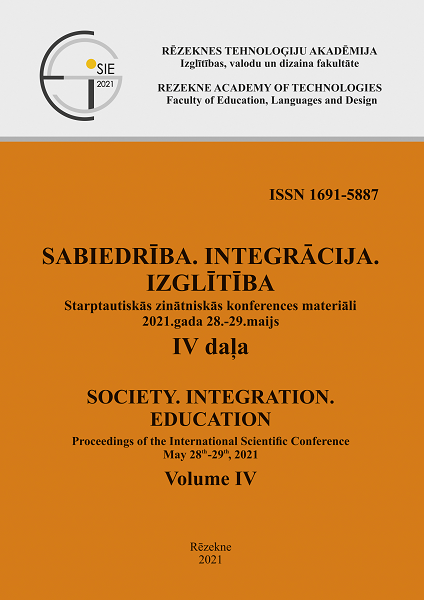ONLINE SALE OF FASHION GOODS
DOI:
https://doi.org/10.17770/sie2021vol4.6360Keywords:
fashion goods, online retailAbstract
The main channel for the distribution of retail goods is gradually becoming the Internet. It is also a binding distribution channel for the sale of fashion goods. It allows the retailer to take opportunity not only to post photos, video and audio material showcasing their latest collections, but also to sell the goods directly to the consumer through a website. In Latvia, the purchase of goods in the Internet is growing very fast, especially during the Covid - 19 restrictions, when the purchase of goods in stores is restricted. Throughout Europe and especially in Latvia the crisis caused by Covid-19 has led to the questions, such as - what to do now, what should change and what decisions should be made by fashion retailers so that employees and buyers are not so vulnerable in such unpredictable force majeure situations? According to data from the Interactive Media Retail Group, for example, the UK's online retail turnover increased by 42% in September 2020, by 35.7% in October and by 39% in November compared to the previous year. The aim of this article is to analyze researches about online fashion retailers conducted by US and British researchers and the results of surveys among Chinese and Latvian students. The questions included in the researches and surveys are: Who sells fashion items online? Who helps to create a good fashion website? How do fashion retailers design websites? Who buys online? Conclusions and proposals have been made for retail web developers in Latvia.
Downloads
References
Ashworth, C. J. (2005). An approach to sustainable fashion e-retail: a five-stage evolutionary strategy for”Clicks-and-Mortar” and “Pure-Play” enterprises. Journal of Retailing and Consumer Services; In press Corrected Proof.
Chen, Q. (1999). Attitude toward the side. Journal of Advertising Research, 39(5), 27-37.
Džeksons, T.& Šovs, D. (2011). Industrija modi. Kijev: Balans Bizness Buks.
Goldsmith, R. E. (2005). Bricks, clicks and pix: apparel buyers’ use of stories, Internet and catalogs compared. International Journal of Retail& Distribution Management, 33(4), 271-283.
Interactive Media in Retail Group. (2020). Retrieved from E- retail, https://www.imrg.org/data-and-reports/imrg-capgemini-sales-indexes/sales-index-december-2020/
Jang, E. (2004). Components of apparel retailing web sites. Journal of Fashion Marketing and Management , 8(4), 375 – 388.
Kaplans, R., & Nortons, D. (2008). Uzņēmuma darbības novērtēšana, (105-177). Rīga: Izdevniecība Lietišķās informācijas dienests.
Kim, E. Y. (2004). Predicting online purchase intentions for clothing products. European Journal of Marketing, 38(7), 109.- 117.
Marciniak, R. (2004). Identification of UK fashion retailer use of web sites. International Journal of Retail & Distribution Management, 32(8), 386.- 393.
Porter, M. E. (1998). Competitive Strategy: Techniques for Analyzing Industries and Competitors. Audible Audiobook – Unabridged, 2008 Free Press (P); 2019 Echo Point Books & Media, LLC
Shanthi, R., Kannaiah, D. (2015). Consumers’ Perception on Online Shopping. Journal of Marketing and Consumer Research, 13. Retrieved from https://researchonline.jcu.edu.au/39753/1/Dr.%20Desti%20Consumers%20perception%20on%20Online%20Shopping.pdf
The Ansoff Matrix Understanding the Risks of Different Options. (2021). Retrieved from https://www.mindtools.com/pages/article/new
Then, N. K. (1999). Apparel shopping on the web. Journal of Family and Consumer Sciences, 91(3), 65-68.


